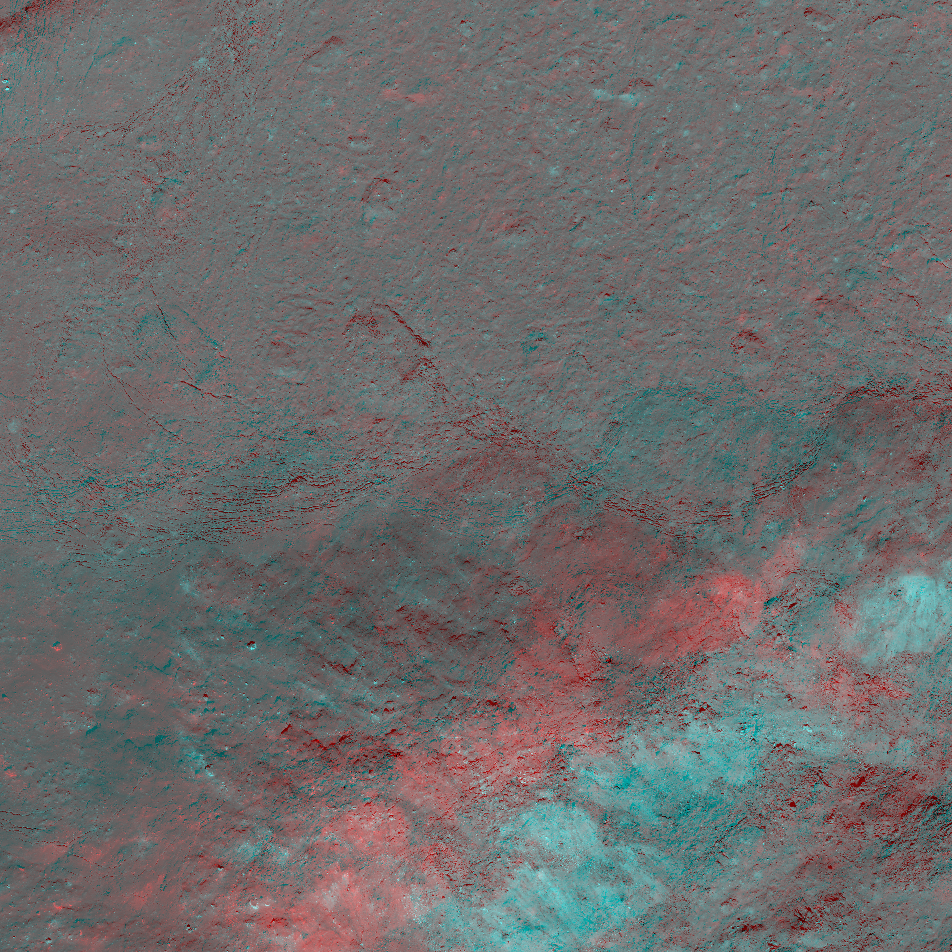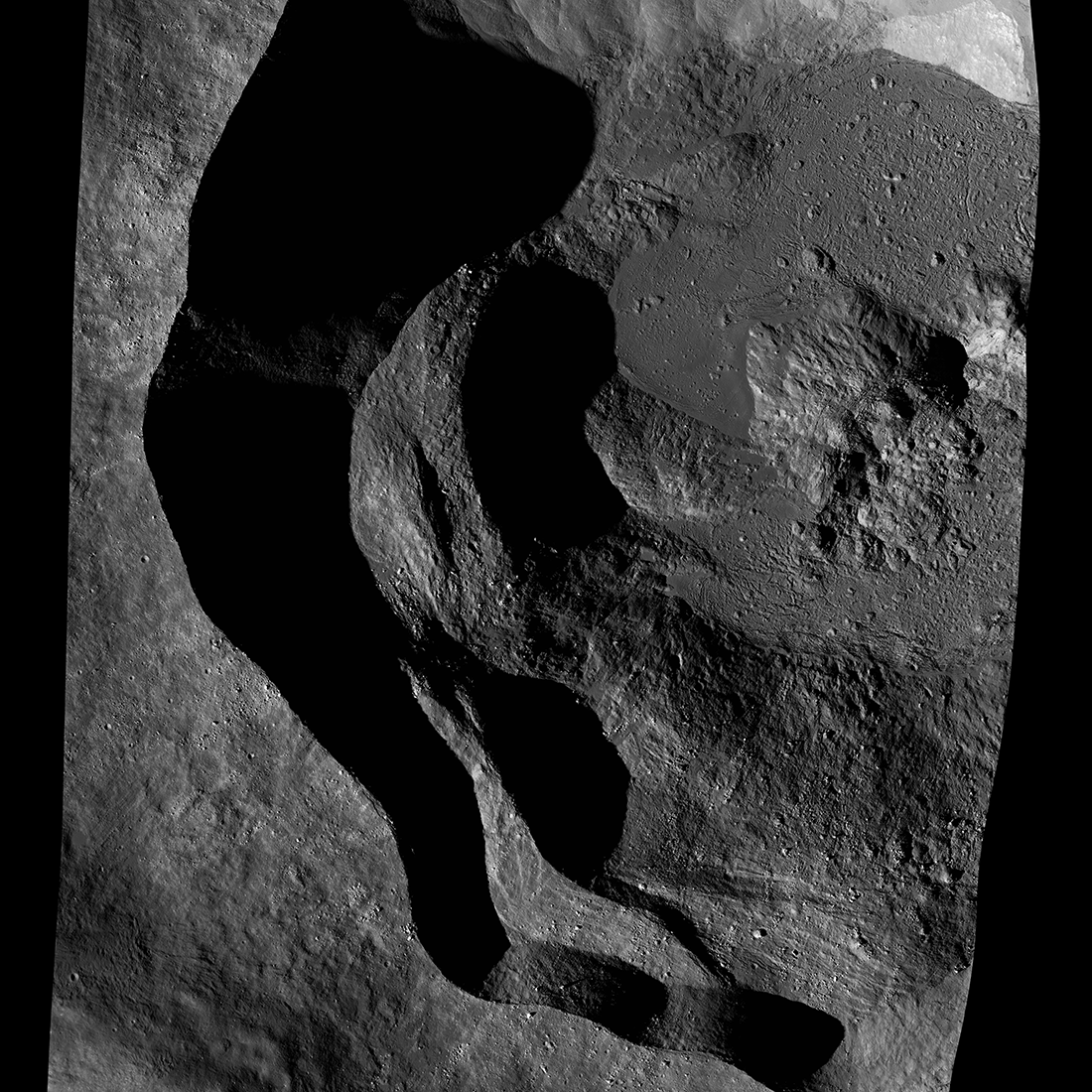
Today we grab our red and blue glasses and swoop down into Moore F, a 24-kilometer wide farside (37.35°N, 185.04° E) impact crater with signs both of fiery youth and slow aging. The readily discernible cracked impact melt in the top part of the anaglyph Featured Image above is a sign of youth; the landslide debris spilling down the elevated landform at the bottom of the image is a sign of degradation. One estimate places the crater age at 40 million years – that is young as lunar craters go.
The elevated landform might also be a sign of transition. Above a certain size, asteroid and comet impact craters on the Moon often have a central peak. Below that size, they usually have a bowl-shaped or flat floor. The transition line between large central peak craters and small flat-floored craters is not, however, set in stone. Moore F is on the small side as central peak craters go, yet it has a central elevated landform. Is that elevated feature a central peak?
The image below shows more of Moore F. The central elevated landform is at center right, but what really grabs our attention are the impressive wall collapse features that bury the cracked impact melt in the western and southern parts of the crater. Tongues of debris extend northeast and east toward the crater center. Could the central elevated landform and wall collapses be related?

Related Links for this Anaglyph
Introducing LROC NAC Anaglyphs!
Related Featured Images
Breaking Down Walls Details of Moore F's magnificent slumpy walls
Bright Boulder Trail Bouncing boulder leaves a trail in Moore F
More Impact Melt! Moore F impact melt
Erosional Trough on Crater Wall Lunar dust flow on the Moore F interior crater wall
Published by Kristen Paris on 9 August 2018